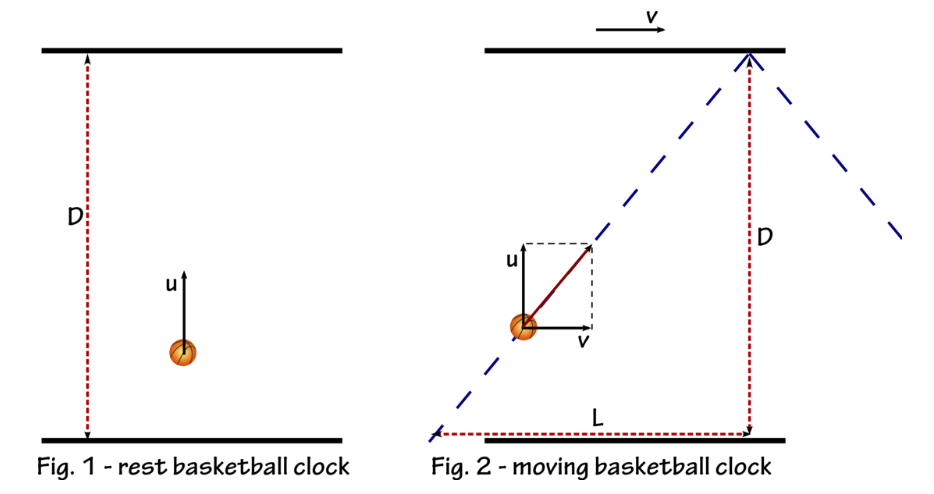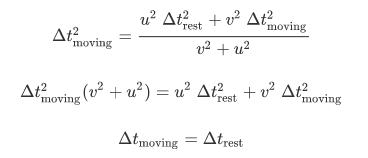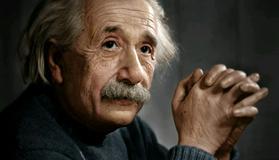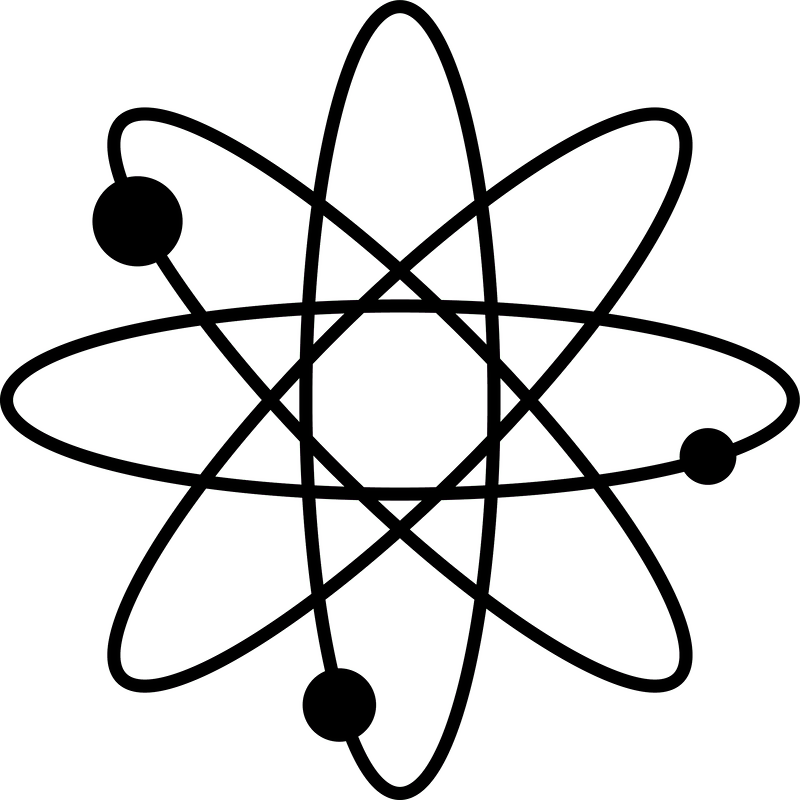Brain Teaser: Einstein Challenged
脑筋急转弯:爱因斯坦挑战
The next brain teaser is optional and it ismeant to challenge your understanding of the previous lessons. It reaches anerroneous conclusion because one of the assumptions is wrong.
下一个脑筋急转弯是可选的,它的目的是挑战你对先前课程的理解。由于一个假设是错误的,它得出了一个错误的结论。
It is a Brain Teaser because the answerwill not follow immediately from the video lectures and the primer. However ifyour intuition is strong, you should be able to guess the answer.
这是一个脑筋急转弯,因为答案不会立即从录像课和入门课中得到答案。然而,如果你的直觉很强,你应该能够猜出答案。
Einstein ChallEnged
爱因斯坦挑战
We have seen that a light clock behavesweirdly: a moving light clock slows down compared to a fixed light clock. Butis this only because of a weird property of light or does it apply to allclocks?
我们已经看到,光时钟的行为古怪:移动光时钟慢了下来,相比固定光时钟。但这仅仅是因为光线的奇怪性质,还是适用于所有的时钟?
In other words, does Einstein's specialrelativity apply only to the behavior of some particular objects or moregenerally to our understanding of time?
换句话说,爱因斯坦的狭义相对论是否只适用于某些特定物体的行为,或者更一般地说是对我们对时间的理解?
A contender of Einstein could claim thatour result about the dilation of time only holds for light clocks, but it saysnothing deep about time itself. Everyday clocks are not made out of light raysor particles, but hard matter. The anti-Einstein physicist might pick anotherclock – let's say a basketball clock. His claim would be that both the restbasketball clock and the moving basketball clock would agree with each other. Nocorrection needed here!
爱因斯坦的一个竞争者声称,我们关于时间膨胀的结果只适用于轻时钟,但它对时间本身没有什么深刻的影响。日常的时钟不是由光线或粒子构成的,而是由硬物质构成的。反爱因斯坦物理学家可能会选择另一个时钟-比如说一个篮球钟。他的主张是,其余的篮球钟和移动的篮球钟都会相互一致。这里不需要修改!
The Anti-Einstein Reply
反爱因斯坦的回答
The Anti-Einstein physicist could reasonlike this:
反爱因斯坦物理学家可以这样解释:
We bounce a ball with a constant, uniformvelocity u, and every beat corresponds to a unit of time
我们用恒定的匀速u来弹跳一个球,每拍对应一个时间单位。
 (如图一)
(如图一)

When we move the clock with constantvelocity v, we keep the whole mechanism intact (such that the basketball isstill projected with velocity u perpendicular to the mirrors). Then a unit oftime for the moving clock will be  (see fig. 2). But this implies that
(see fig. 2). But this implies that 
当我们用恒定的速度v移动时钟时,我们保持整个机构的完整性(例如,篮球仍然以垂直于镜子的速度u投影)。然后,一个单位的移动时钟的时间将 (见图2)。但这意味着
(见图2)。但这意味着
Even if we follow the same derivation as inthe case of the light-clock, we would get the same answer. The basketball moveson a diagonal of length  ,with a total velocity
,with a total velocity , or in absolute terms
, or in absolute terms .
.
即使我们遵循与光时钟相同的推导,我们也会得到同样的答案。篮球在对角线长度的动作 ,一个总的速度
,一个总的速度 ,或绝对
,或绝对 。
。
A unit of time corresponds to the ratio ofthe length covered by the basketball divided to its total velocity, i.e. 
一个单位时间对应的长度比被篮球分为其总的速度,即 。
。
We know that and
and  , and replacing above weget:
, and replacing above weget:
我们知道, 和
和 ,更换以上我们得到的:
,更换以上我们得到的:

With either derivation, the anti-Einsteinphysicist would reach the same conclusion: his basketball clock shows the sametime in both frames. How can this be?
无论哪种推导,反爱因斯坦物理学家都会得出同样的结论:他的篮球时钟在两个帧上显示相同的时间。怎么会这样呢?
Einstein's reply
爱因斯坦的回答
What would Einstein reply to such achallenge?
面对这样的挑战,爱因斯坦会怎么回答?
He would reject the claim that for themoving clock the perpendicular velocity is u
他会拒绝这样的说法:对于移动时钟,垂直速度是u
He would reject the claim that for themoving clock the total velocity is , and itsabsolute value
, and itsabsolute value 
他将拒绝这种说法,动钟总速度 ,其绝对值
,其绝对值



